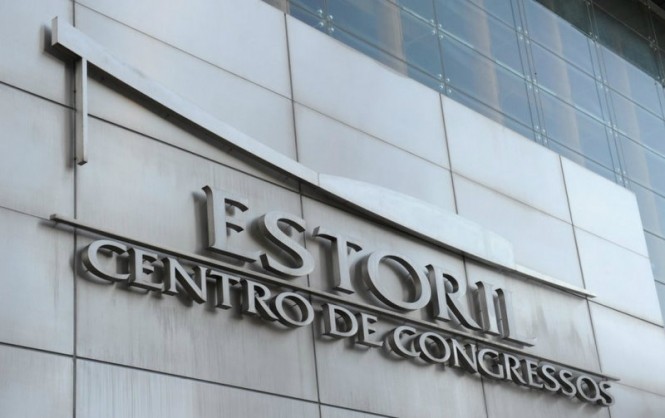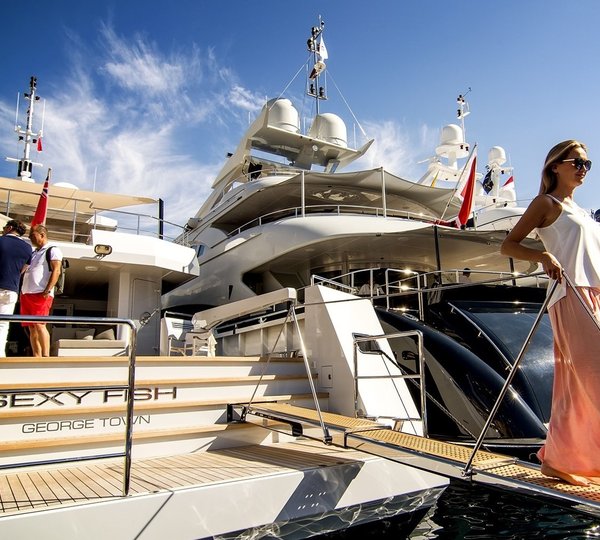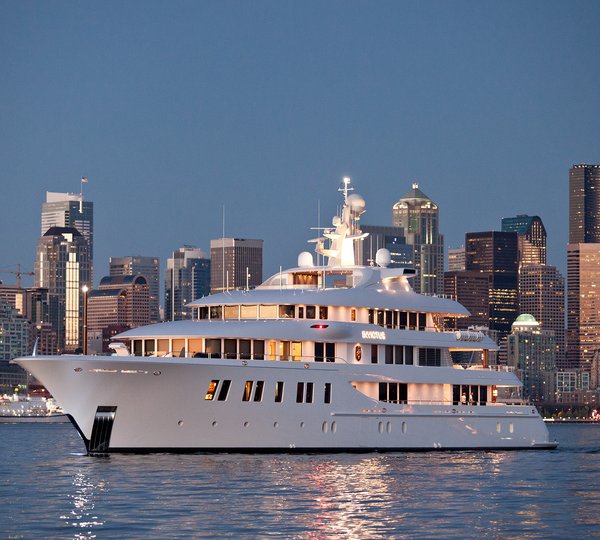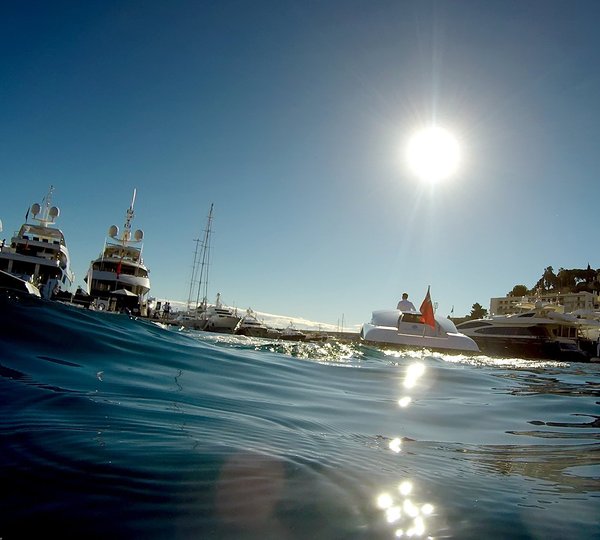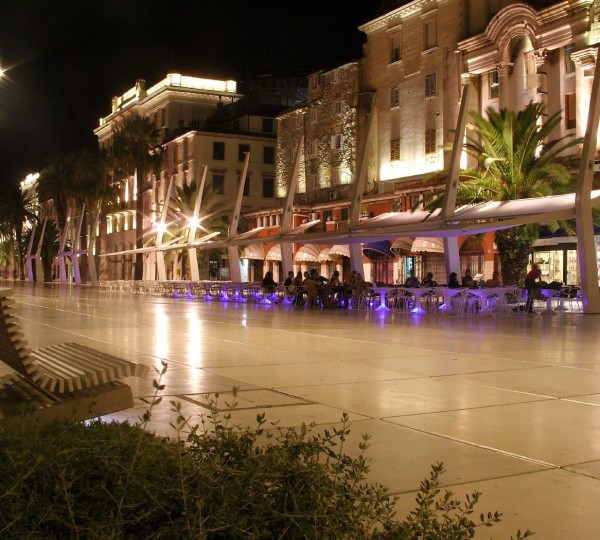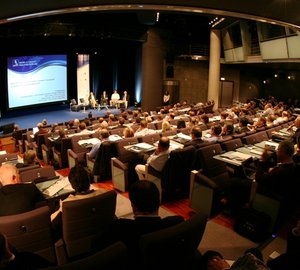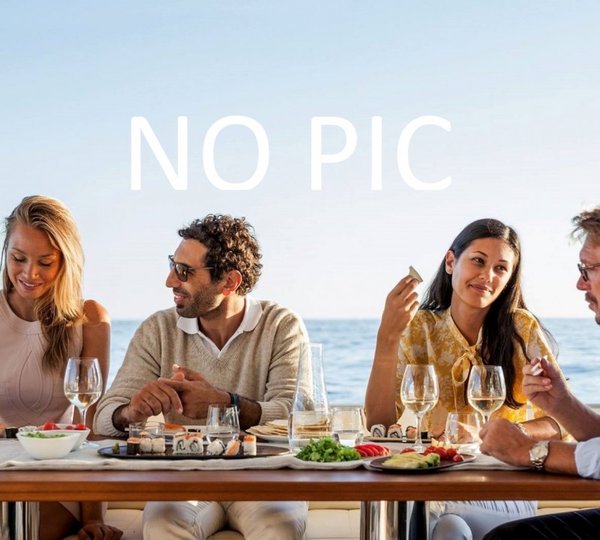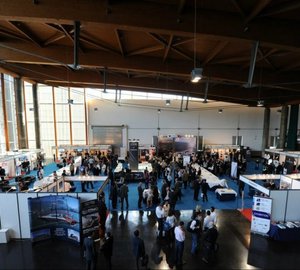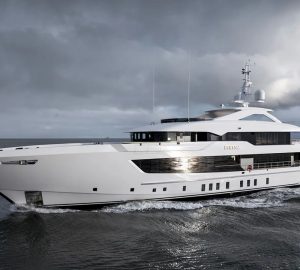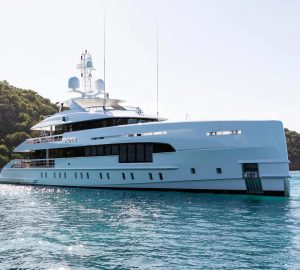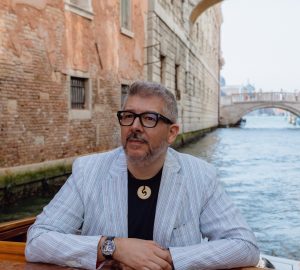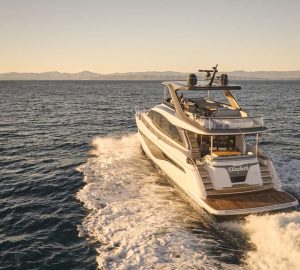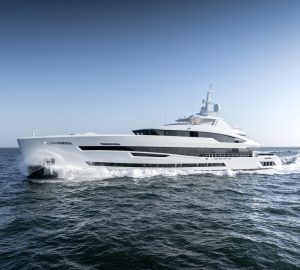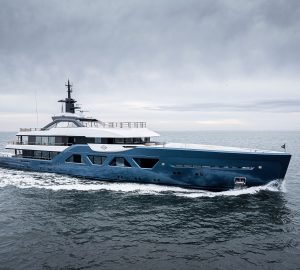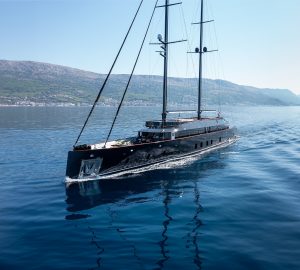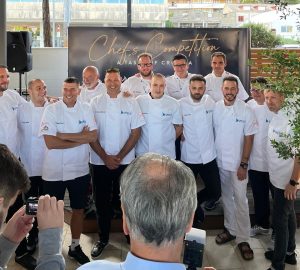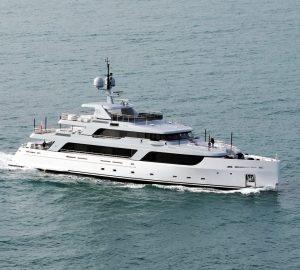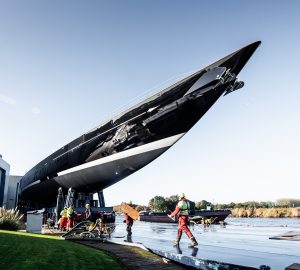According to the World Yacht Racing Forum´s speakers the yacht racing industry is as strong as ever, and provides its partners, venues, athletes and events with great opportunities despite the difficult economy.
The fourth edition of the World Yacht Racing Forum started on Tuesday December 13, in Estoril, Portugal. Over 200 delegates attended the presentations, collecting precious information and meeting the industry’s key actors during the networking breaks.
“Most of the world’s best boat builders are here”, declared Dominique Dubois, President of Multiplast. “For us, it is a unique opportunity to meet the designers, the team managers, the sailors… The Forum is really the place to be if you are involved in the yacht racing industry, because this is where you meet the world’s best in the field. Farr yacht design, Green Marine, Mark Turner, the Volvo Ocean Race, the America’s Cup, Multi One Design… Everyone that counts is here.”
Kevin Roberts, Editorial Director of SportBusiness Group, introduced the debates by setting the context: “Despite the economic situation, sponsorship carries on increasing worldwide. No less than 35 billion US dollars have been invested in sponsorship this year, mainly in sports (77%), and this figure will increase next year. However sailing isn’t benefiting enough from this trend. The beneficiaries are mainly football, golf, basketball or Formula 1 whilst sailing doesn’t seem to be on the radar. There are however many reasons to be cheerful and to look forward to the future.”
The sport is indeed attractive, and current and new projects do have a great appeal and potential. The Multi One Design Circuit, for example, will see its first sailing season in 2012. Introduced at a previous World Yacht Racing Forum, in Monaco, the MOD circuit has now become a reality, dragging partners, suppliers and services providers in its wake.
Many of today’s speakers, split in different debates, highlighted the fact that the sport needs more creativity to appeal to a wider audience. New media and social networks are at the heart of the sports development; they were widely discussed, explained and analysed by various experts such as Aaron Savage, Director, Interactive Mix, who reminded the audience that the key to success remains the message. “Stop focusing on the technology, he said. Focus on what Internet can do and it is huge.”
Hertha Baumann, Vice President PR and Events management, Mirabaud, gave the “Yacht Racing Photo of the Year” as an example. “We have touched 15’000 people in less than two weeks, and reached a public that is much wider than the usual sailing audience. It is for us a different way to show our passion for sailing, and also the proof that there is a huge interest for the sport.”
Talking about how to measure the commercial return of the sport, Nathalie Quéré, head of sponsorship, BT Global Services, highlighted the fact that the sport of sailing provides unique emotions and opportunities. “You can’t just measure your commercial success by calculating your ROI. You need to include other elements such as the emotional factor or the networking opportunities offered by the sport, and those elements are not measurable with conventional tools.”
Andrew Pindar, one of sailing’s long lasting commercial supporters, summarised the day by saying that “there simply isn’t any other platform where to exchange ideas and experiences, and to discuss what we have learned over the year. The World Yacht Racing Forum provides a platform that stimulates the debates and helps the promotion of the sport worldwide.”
In the YRDTS today sessions went long and lively, with a full room of influential designers, builders, rule-makers and owners discussing a wide variety of topics, ranging from Non-destructive testing to the development of HPR, a new Grand Prix rating rule concept. Keynote speaker Pat Shaughnessy of Farr Yacht Design spoke of the need to utilize the creative talents and insights inherent to all competitive sailors to adjust in these economic times to new opportunities to engage more youth-oriented projects within the sailing industry, and also to apply their talents to new fields outside the marine industry as well. Bill Pearson of North Technology Group spoke of this as well in his description of the latest applications for TPT (Thin-Ply Technology), which range from AC72 wingsails to parts for Formula 1 race cars.
In TP52 design, there was wide agreement that the boat and class will have an active new life outside the MedCup, with a meeting scheduled soon to decide their direction for 2012. In the session on Non-destructive testing it was agreed that while great tools exist to determine potential problems in laminate construction, there are standards still needed to determine when these problems may or may not contribute to part failure. After describing the standard design package for the AC72 catamaran to be used in the 34th America’s Cup, Vincent Prevost of VPLP explained that teams wanting to optimize use of this package better sign up by next month, as there is a 10-month build time needed and then only 30 sailing days left in 2012 to comply with the AC rules…so far one of the three teams currently committed to build an AC72 has purchased this package, but will likely use it as a reference only.
The last session on HPR was the longest of the day, as the concept and design parameters were presented by four panelists hoping to see the Grand Prix racing community embrace this new continuum-based rule project which promotes the design of high-performance offshore-capable boats. Thus far there has been some strong interest in this, so the HPR group is promised to make a beta version available for comment by year’s end.
Tomorrow’s sessions will focus on the world’s top yacht racing events, the Volvo Ocean Race, the America’s Cup and the Olympic Games. Sessions will also be dedicated to yacht club management and the place of women in the sport.

